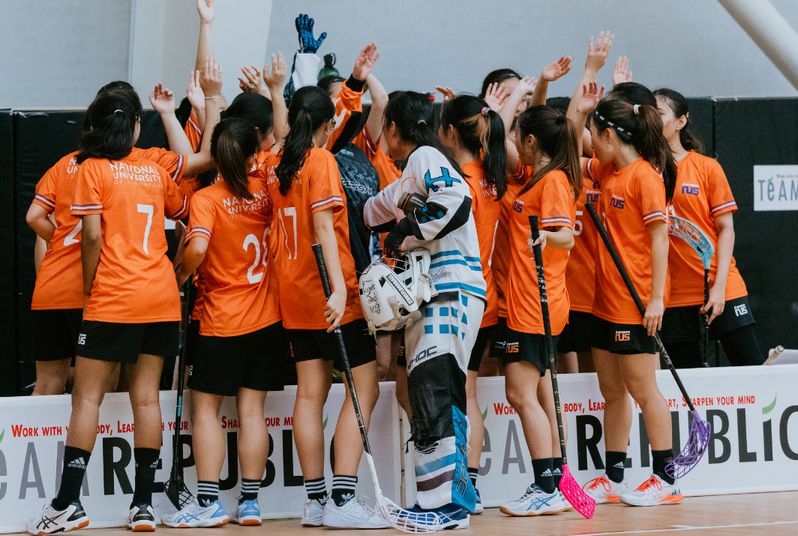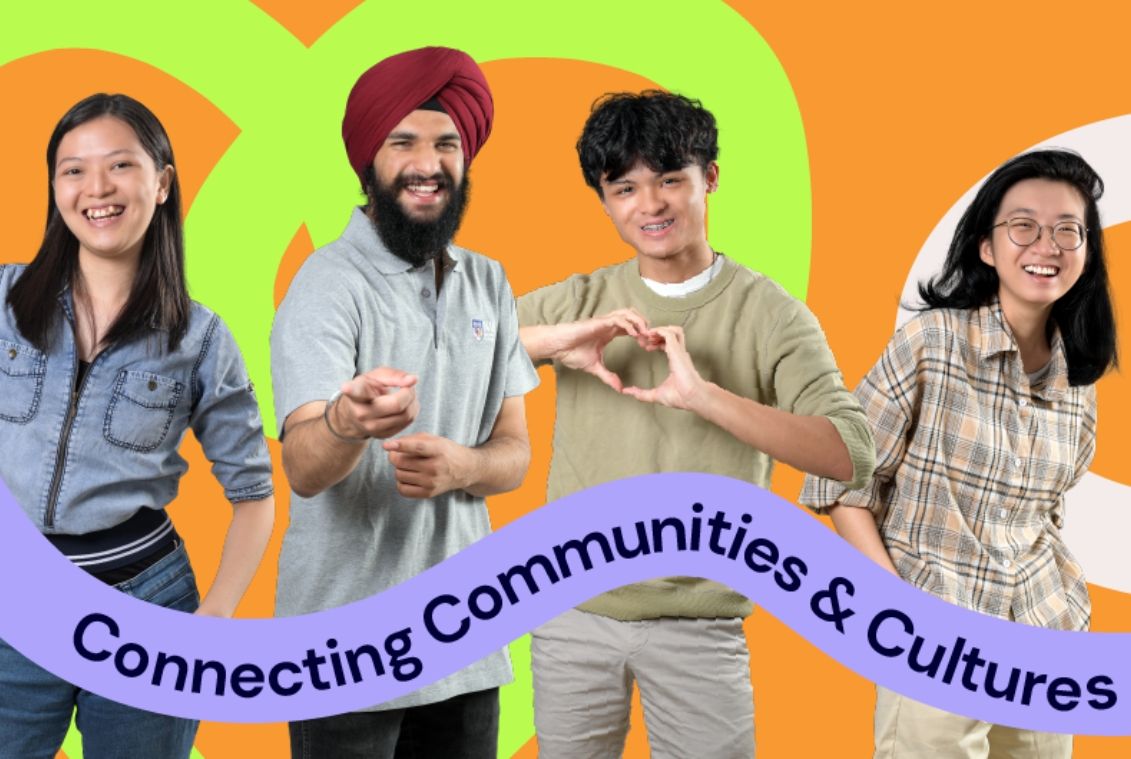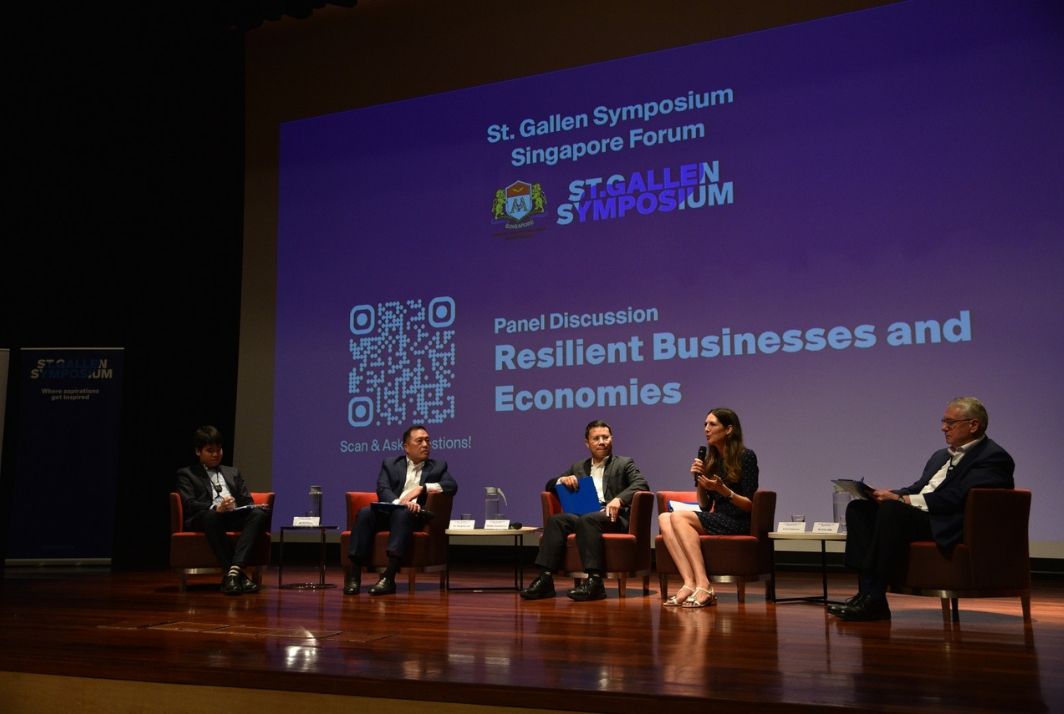A campus arts staple since 1998, the annual NUS Arts Festival is the University’s largest art event and features diverse artistic performances and activities by student groups, alumni artists and faculty members.
This year’s edition themed “Spaces Between”, runs from 10 to 26 March, and explores the possibilities of liminal spaces – the uncomfortable transitory unknown between phases and states. Often a double-edged sword, liminal spaces imbue the promise for growth and positive change amid the uncertainty of the unknown.
Across over 20 live productions, films, public art, installations and dialogues, a unique feature of “Spaces Between” is its selection of interdisciplinary collaborations. This include first-of-its-kind collaborations between artists of different backgrounds and artistic disciplines – creating fresh and thematic explorations and expressions.
These include Inter/change, the festival’s opening show, which presents a first-of-its-kind collaboration between NUS Chinese Dance and NUS Indian Instrumental Ensemble, inspired by the historic Silk Road linking China and India. In the jukebox musical, End of the Line, NUS Stage visits this spirit of interdisciplinary through its use of theatre, dance and music to explore the topic of mortality. There is also MOONRISE, helmed by contemporary classical pianist CHUREN (Churen Li), who redefines classical music in her collaboration with soundscape artist evanturetime and digital artist Prako, that traverses classical and pop genres inspired by the evolution of the Moon.
We meet some of the student and alumni artists to learn more about the festival productions they are involved in.
Lim Jia Ying
Vice President of NUS Stage
Composer and Performer in End of the Line
Year 2 undergraduate, Faculty of Science
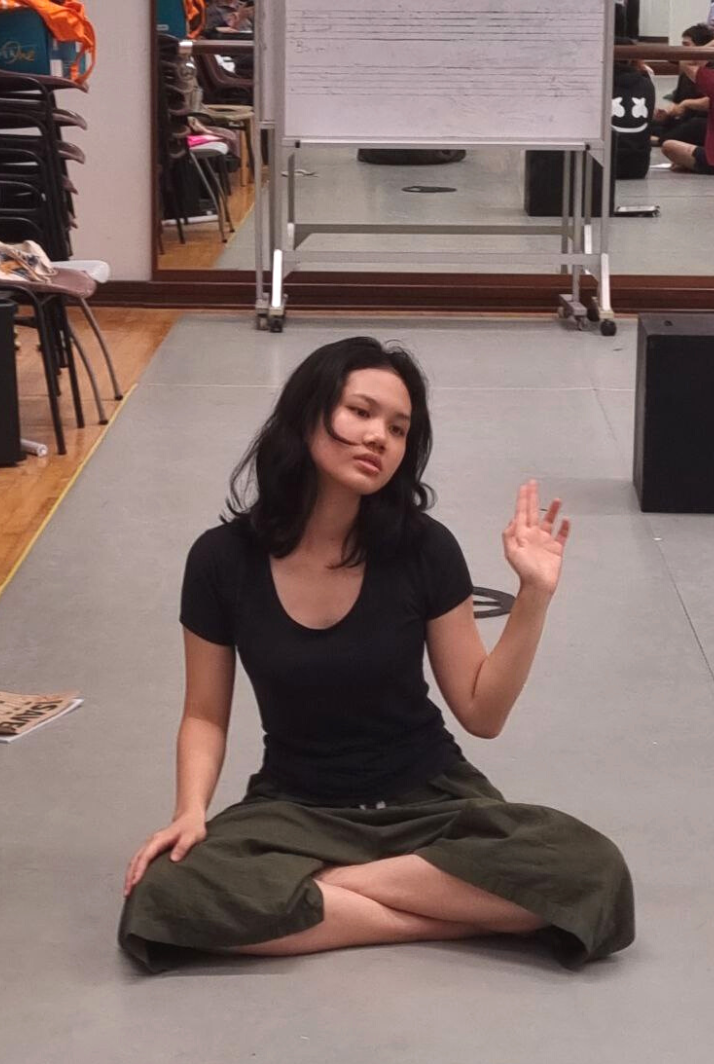
1. How long have you been involved in NUS Stage? Share with us a brief history of how you began pursuing this art form.
I have been involved in NUS Stage since AY21/22, but my journey with theatre started before that in secondary school, where I studied IGCSE Drama and took part in my school’s musical theatre productions. I have performed as the ensemble in Beauty and the Beast, Audrey in Little Shop of Horrors, Bugsy Malone in Bugsy Malone, and Tinman in Wizard of Oz. I went on a “hiatus” after moving to Singapore, until I found NUS Stage in 2021.
2. What is End of the Line about? How is the theme of "Spaces Between" explored?
End of the Line uncovers the world as through the eyes of Gen Z— what it means to live and what it means to die, both physically and metaphorically. End of the Line captures the liminality of the spaces between life and death.
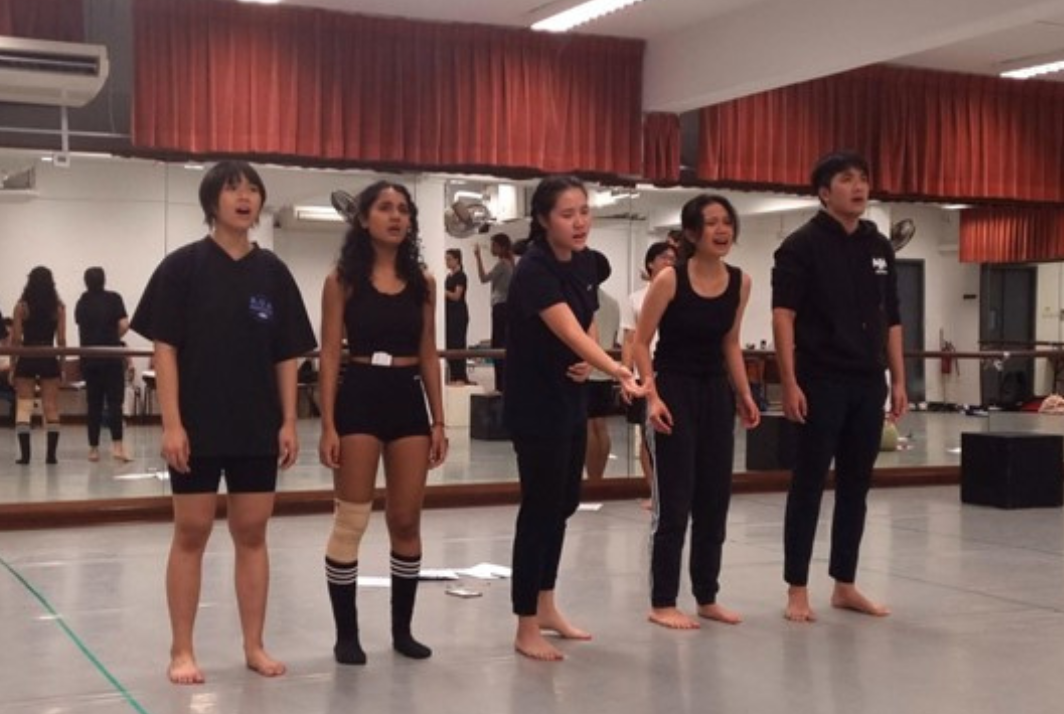
3. End of the Line reflects the trials and triumphs of life through the eyes of Gen Zs, what inspired this narrative?
End of the Line is a collaborative devised piece with the whole of NUS Stage, and Director Chong Tze Chien. This narrative weaves our personal life stories and experiences into a story that highlights what is important to our generation.
4. End of the Line is NUS Stage’s first jukebox musical in a while. How is this production experience different from other NUS Stage performances you have been involved in?
In the other NUS Stage performances, I’ve been involved in, they were very naturalistic and focused on acting. Whereas End of the Line incorporates live singing, lip-syncing, and dancing as well as acting. This also marks my first foray into lyric writing and composition.
5. What will the audience experience be like?
Expect a rollercoaster of emotions from grief to love to acceptance. Watch NUS Stage bring you on a journey to the End of the Line through song and dance as we struggle through the trials and tribulations of life, loss and what it means to be Gen Z.
CHUREN
Producer and Pianist in MOONRISE
Yong Siew Toh Conservatory of Music Alumna

1. How did the concept of MOONRISE come about? How is the theme of “Spaces Between” explored?
The moon is a source of beauty and inspiration for me. There’s something magical about sitting beneath a full moon and observing the infinite colours as it shifts between wisps of clouds. This sounds a bit airy-fairy, but somehow magical things or moments of clarity and creativity tend to come to me when I spend time under the moon. I do that alone a lot and also some of my favourite moments with the people I love have been spent that way. Clearly some classical composers thought so too — like Debussy with Clair de Lune or Beethoven with the Moonlight Sonata. This show is my first complete production in this new artistic direction, of working multi-genre and multi-disciplinarian. And I wanted to harness the energy that the moon represents for me in what is a seminal creative production, hence the title MOONRISE.
We explore the liminal space between 3 different artistic praxes: classical piano, music production and video art. We want to transcend the boundaries of our individual disciplines and build synergy between the realms of sound and vision. The spaces “in-between” are where we feel there is the most potential for innovation. The ideal space for this project will be not in a conventional arts space, but rather in the UCC atrium, to create the unexpectedness of walking into an artistic world that the audience member does not expect.
2. MOONRISE is performed at UCC Atrium, which a less conventional performing space. How will the audience experience differ from being say, a theatre or concert hall venue?
The UCC Atrium isn't merely less conventional, really - it's quite unique a space; with its arced main "wall", and the way the lowered ceiling at the transition from the foyer relents to the relative cavernous height of the main area. This spacious, somewhat cave-like quality (especially when the space is darkened) is perfect for pulling an onlooker into a different world from the outside. Rightly so, as one of the " Spaces Between".
3. At just 120 audience members over two shows, MOONRISE has the smallest capacity amongst NUS Arts Festival 2023 programmes. Why is this intimate experience important?
To be candid, I have always relished the grandeur and natural limelight that comes with a proscenium setting (and variations of that); especially large ones like theatres and concert halls. However, the UCC Atrium will have the audience essentially sharing the Space with me, becoming part of the ephemerality we explore as we journey with the Moon, both physically and in consciousness.
4. As a classical contemporary pianist, how do you thread the line or merge what you love about classical and contemporary music?
For me, it’s the same core that drives the impulse of music making, whether I play classical or contemporary music. A sort of “light”, if you will. There is a brilliance that comes having spent hours exploring the craft of piano-playing since childhood — of sound, focus of expression and depth — and this serves me well no matter which genre of music I am playing. Going beyond the boundaries of classical and melding together influences, genres and styles fuels me creatively.
5. How has the collaborative process between evanturetime, Prako and yourself taken place for MOONRISE?
The inspiration of the moon came about in conversation with evanturetime, when we were working in his studio on a previous project. I was sharing with him about something that happened the day before, under a full moon, and musing about how many composers seemed to have also been similarly inspired by the moon and wrote pieces about it. The collaborative process has been largely music-driven, and I devised the emotional trajectory of the set by spending time alone at the piano, meditating on how the pieces flowed into each other, which I then recorded for evanturetime to build a soundscape to. To meld my piano sounds into evanturetime’s soundscapes also requires me to listen differently, and I enjoy very much the challenge of responding to these different stimuli. Prako has been sharing with us snippets of his visual inspirations, and the vividness of seeing abstract ideas translated through his imagination in turn gives me energy to push the limits of how I can imagine the music.
Lee Ruo Shi
Dance Captain of NUS Chinese Dance
Performer in Inter/change
Year 2 undergraduate, NUS Business School

1. How long have you been practising Chinese Dance? Do share a brief overview of your experience with the art form.
I started Chinese Dance in primary school and have been pursuing this art form for the past 11 years. I only started to gain interest and try to really understand what Chinese Dance is all about in secondary school, in terms of its technique, terminology and history. Through the years, I have learned classical Chinese Dance, “古典舞” as well as various types of traditional, ethnic Chinese dances such as Tibetan (藏族),Dai (傣族),Mongolian(蒙古舞), etc. The art form is so broad and there are many areas I have yet to explore and master.
2. What is Inter/change about? How is the theme of "Spaces Between" explored?
In Inter/change, we explore the history and evolution of Silk Road as well as its cultural impact on our world today. We will introduce the beginning of the Silk Road where silk from China was one of the main trade goods bought and sold in this network, playing a vital role in the history of the Silk Road trade. We will also bring you through the Northern and Southern routes of the Silk Road that facilitated interactions between the Chinese and Indian civilisations, resulting in great cultural, artistic and intellectual exchanges that influenced traditional Indian music and Chinese dance.
This concept will allow us to explore and interpret the idea of “Spaces Between” as spaces between two different parts of the world joined together by the Silk Road, as well as the idea of spaces between different viewpoints, ideologies and cultures. The idea of liminality can possibly be explored through the interactions between these two civilisations and through the comparisons which highlight similarities between the Indian and Chinese ways of life. Liminal spaces between perspectives are also explored as we aim to showcase how the same idea or thing can be viewed differently by different people from different backgrounds but with commonalities in thought.
3. Inter/change is the first-of-its-kind collaboration between NUS Chinese Dance and NUS Indian Instrumental Ensemble (IIE), what inspired this collaboration?
I believe that our tutors and group manager had always thought of the possibility of a collaboration with another performing arts group. Having an interdisciplinary collaboration between a music group and a dance group would allow an opportunity to put together a production from scratch, our own music, and choreography. The idea that brought us together stemmed from how Chinese culture can be associated with Indian culture via the Silk Road. Along with the rich history and traditions from that time, the exchange of art like music and dance was significant as well, giving rise to the music and dance elements that exist today. Hence, the concept of staging the unique traditional styles of Chinese Dance that emerged from the exchange of culture within the Silk Road together with music created using both Indian and Chinese instruments that can depict the types of music used in various distinct cultures.
4. How has the collaboration process been like?
Despite being traditional arts groups, we have never interacted before this collaboration as music and dance groups had little opportunities to interact. It was extremely exciting being part of this collaborative production process with many expectations and hopes. However, music and dance groups approached the production process in a different manner. It required constant, effective communication between our groups regarding the visualisations for each scene, the narrative for the choreography, to the tempo and vibe of each music piece. In addition to a new genre of music, our dancers had to learn and adapt to dancing to live music. It was challenging in understanding and catering to the various artistic stakeholders involved but as we got used to this mode of collaborating and co-creating, the creative production process took off. Both groups started getting comfortable and used to each other. During combined practices, we get to hear the complete music piece with the full ensemble and are able to showcase to IIE how our dance can make their music come alive.
5. Without giving too much away, could you share an interesting aspect of Inter/change that the audience can look forward to?
Inter/change is going to be one of the largest-scale arts collaboration performances in the history of NUS Arts Festival. In Inter/change, we are performing Dunhuang and Uyghur dances which are styles of Chinese dance that you may rarely see being performed. Additionally, you can look forward to a dance performance accompanied by live orchestra music.
NUS Arts Festival runs from 10 to 26 Mar 2023. Apply the promo code HEARTWITHTHEARTS to get 2 tickets at just $30 to catch End of the Line, MOONRISE and Inter/change. Visit www.nusartsfestival.com for more information.
Share:
Contributor
Office of Student Affairs



